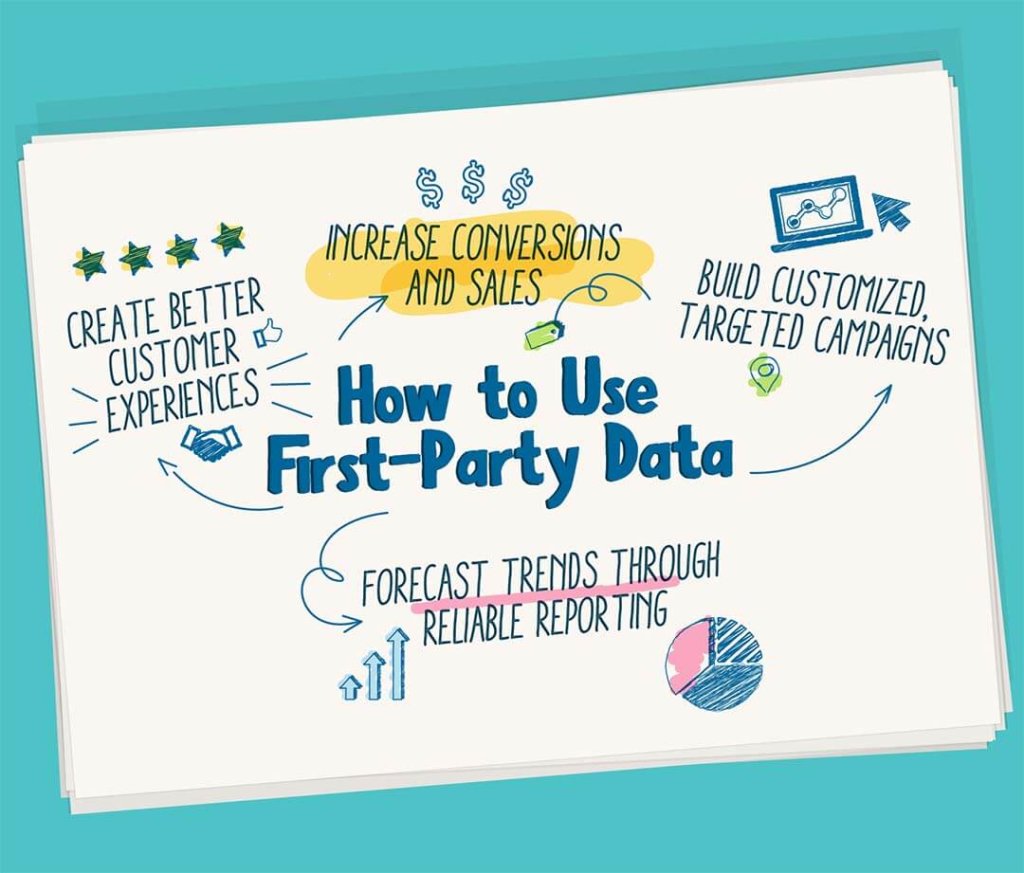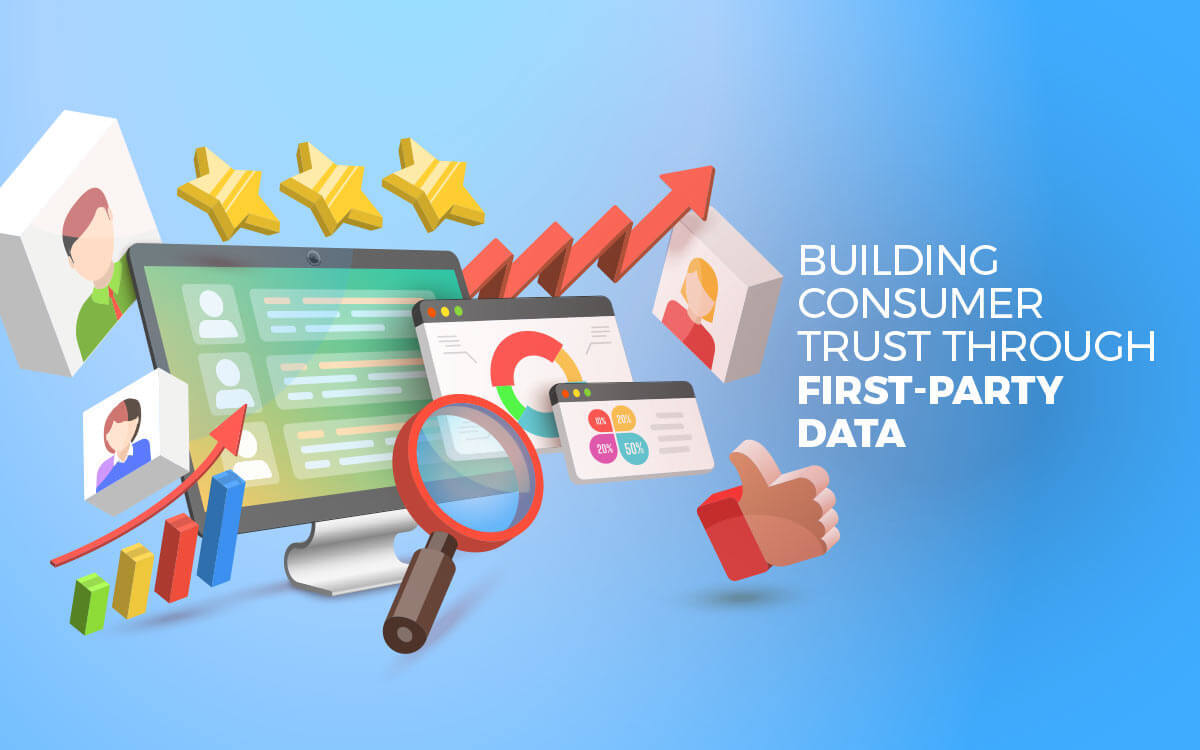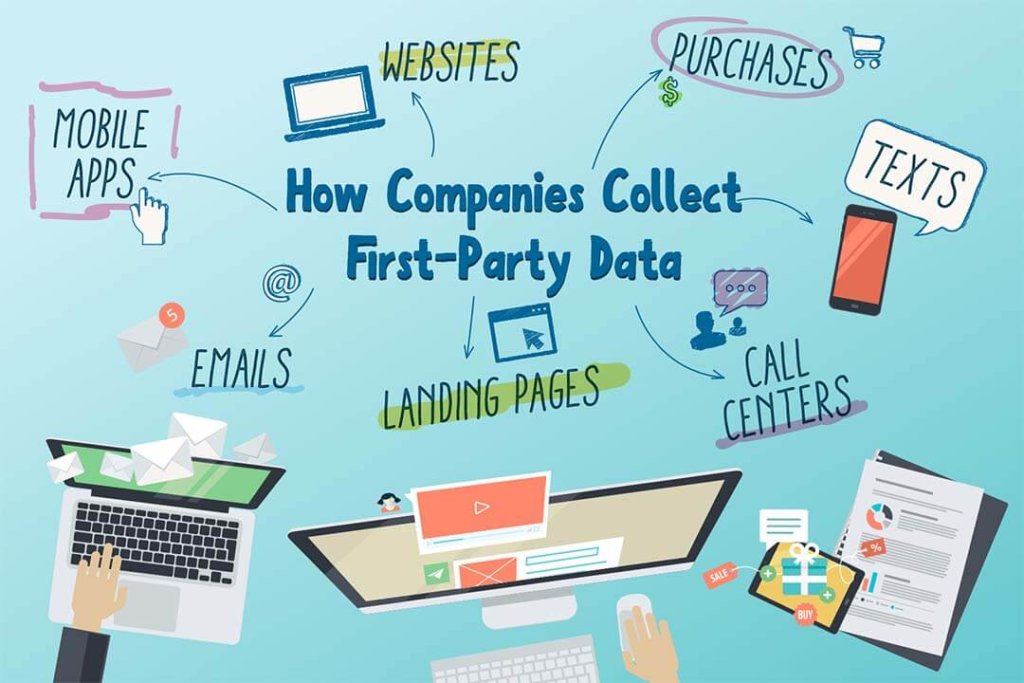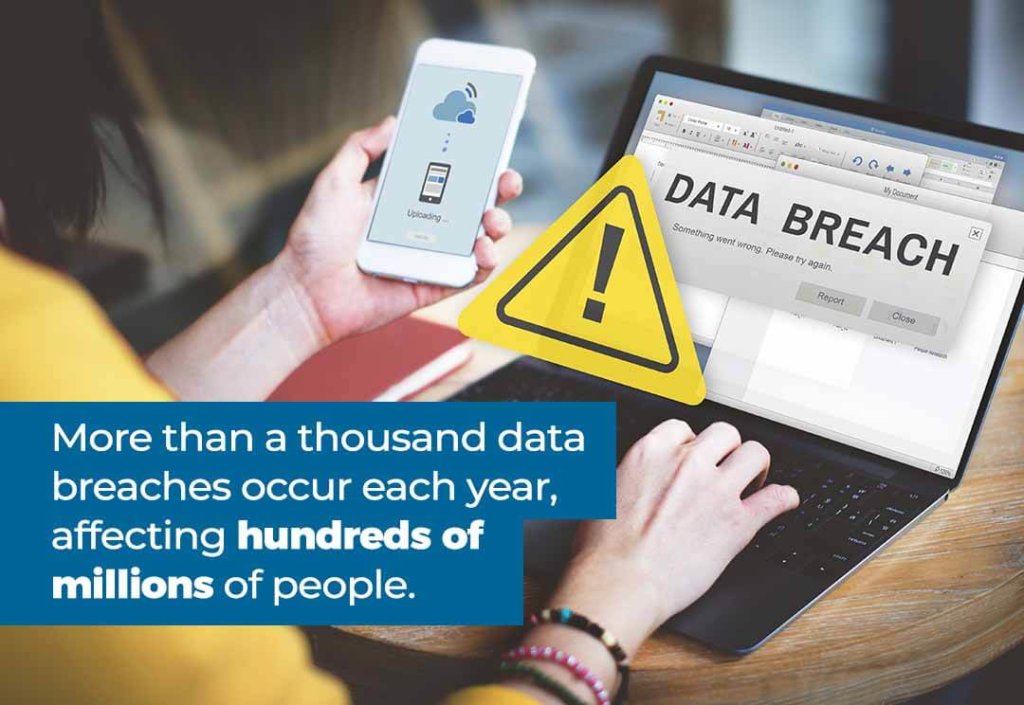When it comes to their data, consumers are becoming increasingly selective about how much they provide and to whom. There seems to be a collective fear about “big brother” watching — and it’s not completely unfounded. How many times have you been talking to friends about a subject only to be served up with a number of ads about it only minutes or hours later? However, it’s actually quite easy to come up with examples of how data collection and data quality can enhance the customer experience. Let’s think about Netflix (or your streaming platform of choice). These apps pay attention as you watch programming and rate titles, tracking and analyzing your behavior to curate a better experience for you. Here, the customer is interacting with the company, providing data directly through each action taken on the site/app. The streaming platform isn’t always explicitly asking the user for this information, but they are also not acquiring it from a source other than the customer. This scenario is a prime example of first-party data collection, and most consumers would probably agree that they appreciate when their streaming apps do this. It helps people more easily find new shows and movies to watch that they enjoy because they’re being recommended titles based on their individual taste. Yet, if you were to ask these same people if they fear providing data to companies when they are explicitly asked, they’d probably say yes. There’s a gap here, where consumers don’t fully understand how providing first-party data can allow a company to gain knowledge that, in turn, can shape a much better, more seamless experience for the consumer. While there are undoubtedly risks with handing over some data—especially if you cannot verify the trustworthiness of the recipient—many times, the benefits actually outweigh the risks. The key is transparency. When consumers understand why you are collecting their data and how it will be used, they are more likely to willingly provide it to you.
Types of Data
Consumer data is classified by how it is collected. Third-party data is probably the most familiar to consumers, as it pops up in many of the fine-print opt-in boxes on websites and apps. There are several other ways to gather data:
Zero-Party Data
Zero-party data is the most straightforward form of data collection. It occurs when the consumer consciously supplies data directly to a company. A good example of this is filling out a form on a website. In this circumstance, the customer is wholly aware that they are providing information that will be used by the company.
First-Party Data
When a company collects data about its own customers’ behavior and preferences, it is known as first-party data. This type of data can be compiled through various digital marketing tools and data management platforms that track analytics such as email open rates, time spent on pages of apps or websites, and purchase history—to name just a few examples. With first-party data, consumers are still providing it through their own actions. It differs from zero-party data, though, in that the consumers may not be aware of exactly what is being collected and tracked or when it is happening.
 Second-Party Data
Second-Party Data
Many companies have partners that have collected zero-party and first-party data from their own customers. When the zero- or first-party data collected by one company is shared with a company they are in partnership with, the data becomes classified as second party. Essentially, second-party data comes from a secondary yet related source. Because the source of second-party data is usually known and trusted, the data should usually be pretty reliable and applicable. If there are ever any doubts as to a partner’s honesty or validity, though, it’s best to disregard the data. Zero- and first-party data will always be the most accurate.
Third-Party Data
Third-party data is when things get a bit murkier. Third-party data is often collected or purchased from sources unaffiliated with a company. The reason this information can be valuable is because it often comprises data points that may not be available within the company’s zero-, first-, or second-party data sets. For instance, if a company is planning to expand into a new market, they may not have any zero- or first-party data related to the new audience. That’s where third-party data could potentially come in handy to provide some insight and inform data strategy.
The Best Method of Customer Data Collection
Using data that a company collects directly from the customer and is shared only within the company (zero- and first-party data) is the path of least resistance when it comes to privacy laws and consumer skepticism. It’s expected that companies will ask their customers for pertinent information and use it to enhance their marketing efforts. However, relying solely on zero-party data or first-party data presents limitations because that consumer information would only come from existing customers and prospects. What about the audience data from people who have no awareness of the brand yet? To increase reach, companies are always looking for ways to get in front of new people. Second and third-party data serves a purpose by filling in gaps the data from existing customers can’t, but it is less reliable since the data may be old or aggregated from a variety of sources. It’s not always easy to verify the truth of third-party data either. Additionally, the audience you are trying to reach through obtaining third-party data may feel violated if they realize you obtained their personal data from a different source. Your company’s reputation is a very important consideration when deciding whether or not to utilize third-party data. While data providers seem to be a dime a dozen these days, buying lists from them isn’t a decision to be taken lightly. Relying on zero- and first-party data is the safest and most transparent route to go.
How Companies Collect First-Party Data
So, in the interest of keeping your customers loyal and your brand’s reputation solid, it’s important to optimize your first-party data collection methods. There are a multitude of ways you can be tracking and analyzing customer engagement. Here are several facets of your business that you should be leveraging to produce valuable insights related to first-party data:
- Websites
- Landing pages
- Mobile Apps
- Emails
- Texts
- Purchases
- Call centers
There are a multitude of ways to mine high-quality data from these various digital interactions. Many of the data management platforms used to create and manage these assets even come already equipped with functionality to effectively collect and manage first-party data for you. Make sure you’re getting the most out of the programs and possibilities at your disposal.
How to Use First-Party Data
While we’ve touched on the fact that first-party data is not entirely comprehensive since it doesn’t account for untapped markets, that doesn’t mean it can’t provide invaluable audience insights. A good first-party data strategy can result in several big wins for your business.
Create Better Customer Experiences
The best customer experience is one with as little friction as possible. When you have a robust customer data platform with all the demographic characteristics you need to predict audience behavior, you can create experiences perfectly tailored to potential customers. When consumers are delighted by their experience, they are more likely to become repeat customers and to recommend you to others. Having long-lasting success depends on attracting loyal customers, and that is done through a seamless customer experience crafted by insights from first-party data.
Increase Conversions and Sales
Beyond just the additional sales you can generate through creating happy customers with a great customer experience, first-party data can also provide you with the insight needed to produce more sales. After all, the customer journey affects conversion. Here’s an example: Say you analyze all your customers’ purchase history and recognize a pattern that certain products are often bought by the same type of consumer. You can set up automations to recognize when a customer that fits that demographic is shopping and then build in suggestions for other products they’d be most likely to buy. Collecting and analyzing first-party data helps you make these valuable connections you may not have otherwise been able to recognize.
 Build Customized, Targeted Campaigns
Build Customized, Targeted Campaigns
Similar to the example above regarding customized product suggestions, having a lot of first-party data at your fingertips allows you to easily create audience segments with whom you can employ different marketing tactics and data strategies. For instance, depending on your business, you may want the ability to market different things to different age groups or genders. Or, maybe you want to offer varying deals to prospects versus repeat customers. First-party data provides the insight you need to build customer journeys based on different consumer profiles.
Forecast Trends Through Reliable Reporting
Once you’ve collected a significant amount of valuable data over a sustained period of time, you’ll be able to recognize trends that may help you plan more effectively for the future. If you take a look at your first-party data and realize that, say, fewer purchases always come in during the winter, you may decide to minimize marketing budget during that time and reallocate it to a time of year where sales are more likely to occur. Furthermore, continuing to analyze first-party data when you try tactics like this let you know what tests were successful. This knowledge will help you optimize your marketing strategies again and again over the long haul.
Where Privacy Comes into Play
Now, it’s impossible to ignore the aforementioned cynicism a very large portion of consumers have toward readily sharing their data with companies. Even if you plan to rely solely on zero-party and first-party data, it’s still important to be well versed on laws and regulations pertaining to privacy and data.

Data Protection and Privacy Laws
Presently, in the United States, there is no national law that speaks to data privacy as a whole, but there are several laws that speak to certain aspects of it, such as the Children’s Online Privacy Protection Rule (COPPA), which limits the data companies can collect on children under 13. California, Virginia, and Colorado also have their own laws regarding data privacy, and several other states are in the process of getting legislature developed around data as well. Europe, on the other hand, does have an overarching privacy law, called the General Data Protection Regulation (GDPR), that all businesses are required to adhere to. It requires consent from consumers regarding certain types of data collection and storage. The bottom line is that you should do research into whichever states and countries you plan to conduct business in. As you are setting up your processes, make sure that you are fully compliant with the laws currently in place.
Consent and Disclosures
Because privacy laws are nuanced and vary by location, not all companies are required to disclose how they collect data or what they do with it. In many cases, they do not even need consent to collect or sell consumer data. For consumers interested in how a company handles data privacy, they can look for the company’s privacy policy, which is usually linked in the footer of company websites.
Data Breaches
As technology improves, so does companies’ ability to protect consumer data. However, more advanced technology also means hackers are getting more advanced. More than a thousand data breaches occur each year, affecting hundreds of millions of people. Many of the world’s largest companies have been victims of data breaches. What’s tricky is that the laws also vary by state and country regarding how consumers are notified of a data breach. Consumers often must be notified within a certain time frame, but they may not need to be notified at all if the data compromised wasn’t personally identifying or if only a small number of people were affected by the breach.
Third-Party Data Sales
Unfortunately, for consumers, there are very few laws currently in place that restrict companies from selling their data. Apple’s recent addition of the “Ask App Not to Track” option for mobile apps helped put some consumers’ minds at ease and gave them back some semblance of control, but it’s not foolproof. Even when Apple users opt-out of tracking, it seems that some data is still tracked and shared in order to ensure app functionality in certain cases.
Conclusion
A lot of the fear for consumers around providing data comes from a lack of understanding of how it will be used. Companies can help put consumers’ minds at ease by focusing most heavily on first-party data and being more transparent about how they are collecting and using the data. When customers understand that processes can become easier and experiences can improve when companies have access to more first-party data, they will be more likely to freely share it.
FAQ
What is the difference between first-party and third-party data?
First-party data is data that companies collect directly from its own audience. This can include demographic data, purchase intentions, as well as user behavior. Third-party data comes from a data source (or multiple sources) that have no affiliation with the company using it.
How do companies keep customer data safe?
Here are a few ways that companies keep customer data safe:
- Adhering to any privacy laws in place in the customers’ state or country
- Keeping encryption techniques and technology up to date
- Collecting only the most necessary data points
- Limiting access to customer data as much as possible
Should consumers avoid providing their data to companies?
It is not necessary to completely avoid providing data to companies. In fact, providing pertinent data to companies can often help improve the consumer’s experience. When faced with a question about whether or not to provide data, a consumer should always consider the reputation and trustworthiness of the company requesting the information. It is also important to evaluate the legitimacy of the ask. Why might a company be asking for this specific information? If the answer is unclear and the data in question is sensitive, be wary of handing it over.
Are companies required to share how they use customer data?
The laws that govern the way companies handle data vary based on state and country. In the U.S., there is no blanket law that mandates all companies reveal their data practices. However, there are various federal laws restricting certain data practices in various circumstances. Several states have also introduced stricter legislature regarding consumer data and privacy.
Build more trust with your customers, today.
Are you interested in creating a more customer-focused online experience for site visitors while being more transparent with your consumer data? As data collection specialists, ISG utilizes our in-house customer data management platform to ingest first-party data from your sites and CRMs to create segments we can leverage on different popular media platforms. Our third-party targeting allows you to reach relevant customers based on both online data and offline data across the web, collected from our premium data partners. Reach out today to learn more.





